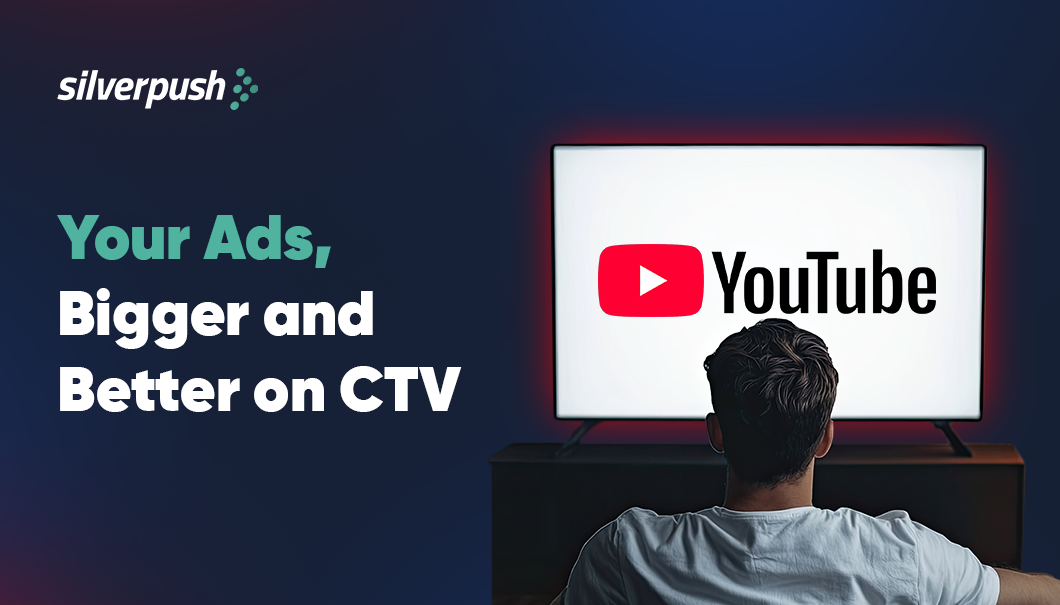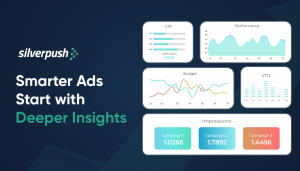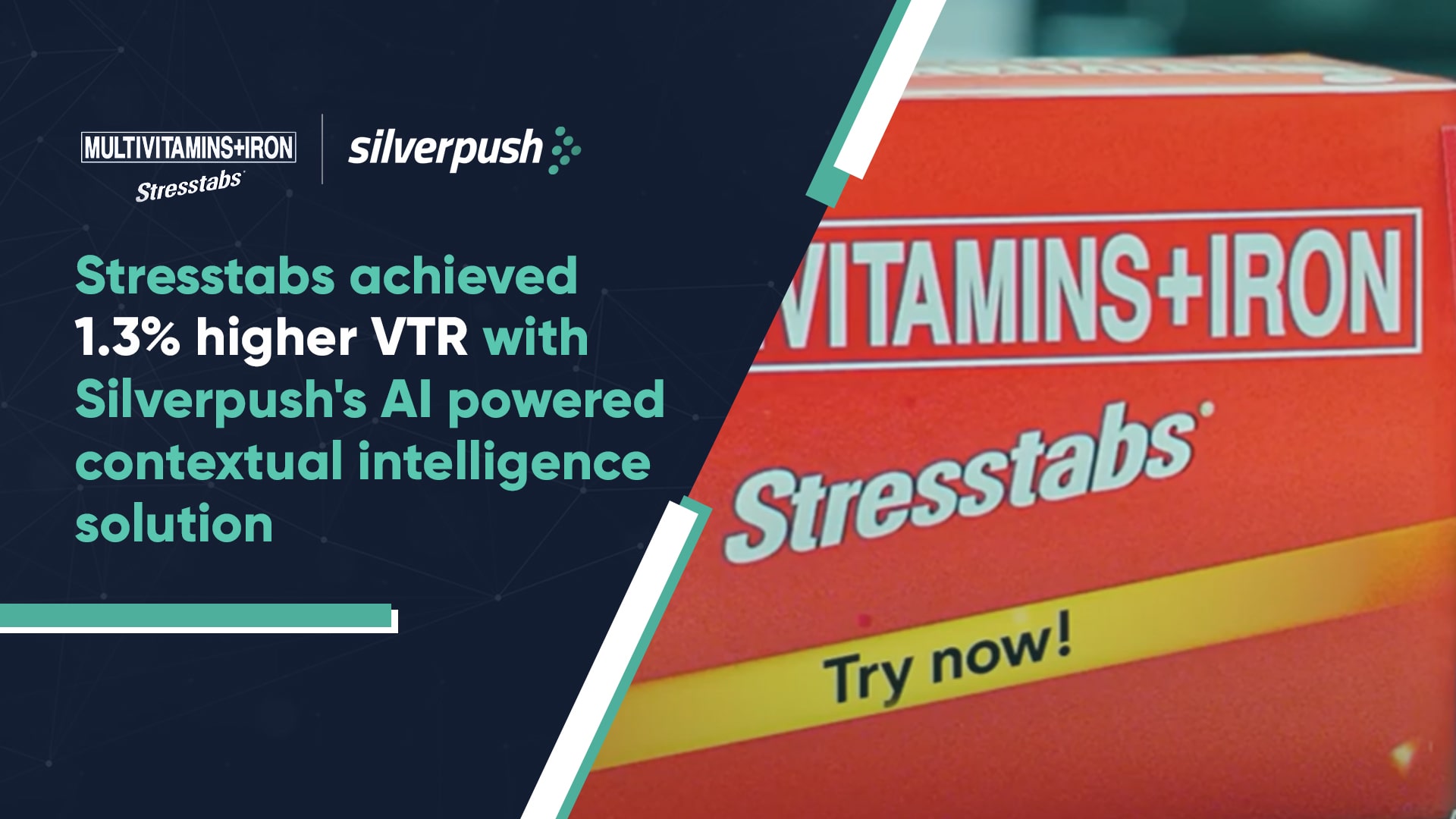YouTube CTV Advertising: Bigger Screens, Bigger Impact | 26 Mar, 2025

YouTube has always been a powerhouse for brands looking to connect with audiences. With over 2 billion monthly active users, it’s a platform that reaches people everywhere, on their phones, tablets, and laptops.
However, the way people watch YouTube today is very different from how it used to be in the past. It’s no longer just about quick scrolls on a smartphone or catching up on videos during a lunch break. More and more viewers are tuning in from their living rooms, watching videos on the biggest screen in the house.
This shift is what’s driving the rise of YouTube Connected TV (CTV), with an estimated 170 million monthly users in the US. It has officially overtaken traditional platforms like Netflix and Hulu in streaming watch time.
As an advertiser, you can’t ignore this. Why? Because it offers a premium, lean-back experience—one where audiences are fully engaged and paying attention, just like traditional TV, but with all the benefits of digital.
In this blog, we’ll discuss why YT CTV is growing so fast, how it’s shaking up the ad world, and, most importantly, how your brand can make the most of it.
Why is YouTube CTV a Must for Advertisers?
Here’s what you get with YouTube CTV advertising:
1. Massive Reach
YouTube accounts for 11.1% of all TV screen traffic, surpassing Netflix, Hulu, and Prime Video. It’s also one of the biggest co-viewing platforms, with 26% of YouTube CTV watch time happening in group settings. That means one ad placement can reach multiple viewers at once, amplifying your brand exposure.
2. People actually pay attention
When someone watches a YouTube video on their phone, there’s a good chance they’re multitasking, scrolling, texting, or half-watching. But on a big screen? They’re locked in. That means your ads get more attention, better recall, and higher engagement. Let’s take a look at some numbers:
- 80% of YT CTV viewers in the U.S. watch ad-supported content.
- CTV ads drive better engagement. Studies show that YouTube CTV ads deliver a 10% greater lift in recall than ads on linear TV.
- YouTube view-through rates usually fall between 50% and 60%, while CTV can reach up to 96% video completion.
3. Smarter targeting, no creepy tracking
With privacy concerns on the rise, relying on third-party cookies is a thing of the past. YouTube CTV lets you serve ads based on content, interests, and real viewing behavior without invading anyone’s privacy.
4. A smooth, cross-screen experience
Ever notice how you might see an ad on your phone, then later on your TV, and suddenly it’s stuck in your head? That’s the power of YouTube’s ecosystem. Your brand can seamlessly reach people across devices, reinforcing your message without being intrusive.
5. Big-screen impact without big TV costs
Traditional TV ads come with a hefty price tag, and let’s be honest, a lot of those impressions go to waste. With YouTube CTV, you get the same high-quality exposure but with better targeting, real-time performance tracking, and the ability to tweak your campaign as you go.
How Brands Can Incorporate CTV Advertising into Their YouTube Media Mix?
So, you’ve seen how YouTube CTV ads can grab attention and boost brand awareness. Now, it’s time to turn that awareness into real action, whether that’s driving purchases, increasing sign-ups, or deepening engagement with your brand.
Here’s how you can seamlessly integrate CTV into your YouTube ad strategy and convert viewers into customers:
1. Use Cross-Device Targeting to Keep Viewers Engaged
People don’t just watch on one screen. They move from CTV to mobile to desktop throughout the day. Use CTV ads to build brand awareness, then retarget those viewers on their phones or laptops with action-driven ads that encourage clicks and conversions.
2. Optimize Creative for the Big Screen
CTV ads run on large, high-definition screens, so visuals and messaging need to match that premium experience. High-quality visuals, clear branding, and engaging storytelling work best because viewers are usually in a relaxed, entertainment-focused mode rather than actively scrolling.
3. Use AI-powered Contextual Targeting to Reach the Right Audience
Instead of guessing where your ads should go, use AI-driven contextual targeting to align your message with relevant content. This ensures your ads reach the right audience at the right moment, whether they’re watching a sci-fi movie or exploring tech-related content.
4. Measure Performance with CTV-Specific Metrics
Traditional click-through rates (CTR) don’t fully capture the impact of CTV ads since viewers can’t always click as they would on mobile. Instead, focus on view-through rates (VTR), brand lift studies, and incremental reach to measure awareness and engagement more accurately.
5. Align Messaging with Viewer Behavior
Since CTV viewers tend to have longer watch sessions, mid-roll and post-roll ads can be more effective than shorter, skippable pre-roll ads. Structuring your campaigns to fit viewer habits helps increase engagement and recall without disrupting their experience.
How Mirrors Contextual Intelligence Enhance YouTube CTV Targeting?
When it comes to YouTube-connected TV advertising, precision is everything. It’s not just about getting your ad in front of an audience; it’s about making sure it appears in the right context at the right moment for maximum impact. That’s where Mirrors AI by Silverpush comes in.
With over 12 years of experience in contextual advertising and 10,000+ successful campaigns for global brands, Mirrors AI takes YouTube targeting on CTV to the next level. Unlike traditional targeting methods that rely on broad categories or keywords, Mirrors uses advanced AI to analyze video and even viewer interactions.
💡 So, what does that mean for advertisers?
- Your ads land in emotionally and contextually relevant content, making them feel more natural and engaging.
- Brand safety is a given—no more worrying about ads showing up in the wrong places.
- Ad recall and audience connection skyrocket because your message aligns seamlessly with what viewers are already engaged with.
But it’s not just about placement. Mirrors AI provides real-time insights into contextual performance, audience engagement, and brand suitability, helping advertisers fine-tune their strategies and drive better results.
The Future of YouTube-Connected TV Advertising
YouTube CTV is blurring the lines between traditional TV and digital advertising, creating a space where audiences are spending more time and where advertisers need to be.
You can’t just reuse standard digital ads and expect results. To truly stand out, you need to think contextually.
The brands that embrace AI, precision targeting, and seamless storytelling will be the ones that win. Ads that feel natural, relevant, and well-placed don’t just grab attention; they drive action.
As YouTube continues to dominate the CTV space, the smartest advertisers are already adapting. The question is: Are you ready to make the most of YouTube CTV?

BLOGS
Partner Spotlight: Alice Ovadia, VP of Media Strategy
Silverpush is excited to highlight TRUth for our Partner Spotlight this week. We caught up with Alice Ovadia, VP of Media Strategy at TRUth, to learn more about the agency and talked to her about her big predictions for the ad market in the coming years. Here’s what Alice said. 1. ...

BLOGS
Why Granular Insights Are Critical for Ad Campaign Optimization
When your ad campaign ends and the dashboard lights up with a “great” VTR or a CTR that’s above average, you celebrate, right? But then comes the pause. What actually made it work? Was it the creative? The audience? The time of day? The context of the video? Most platforms ...

BLOGS
Silverpush Unveils Pre-Bid Brand Safety and Contextual CTV Segments
The CTV ad market is booming: global CTV ad spending is estimated to reach $30 billion this year and more than 80% of US households are using CTV devices. The biggest channel for CTV streaming is YouTube, followed by Netflix and Hulu. Completion rates for ads are high and an ...







